Blood in (and as) Art
One of the first known expressions of human creativity, the Lascaux cave paintings, were created with blood, a material that has remained significant...
Kaena Daeppen 10 June 2024
In a career that spanned over two decades, Jean-Paul Laurens painted some of French art’s most plaintive historical moments: two young princes huddled together, waiting for their inevitable demise; a king slumped on his throne, his queen clutched beside him, contemplating his official damnation; a deposed emperor finding his pride ahead of the firing squad. But none of Laurens’s art shocks as much as Le Pape Formose et Étienne VI – Concile Cadavérique de 897 (Pope Formosus and Stephen VI – The “Cadaver Synod”, 897).
Its simple title belies the severity of its scene—a medieval pope harangues the decomposed yet freshly attired corpse of his forebear, a jury of fellow bishops whispering to one another in the background. Without a title or context, viewers might see the painting as a tasteless parody. However, Laurens’s work depicts a real trial during the Medieval Catholic Church’s history
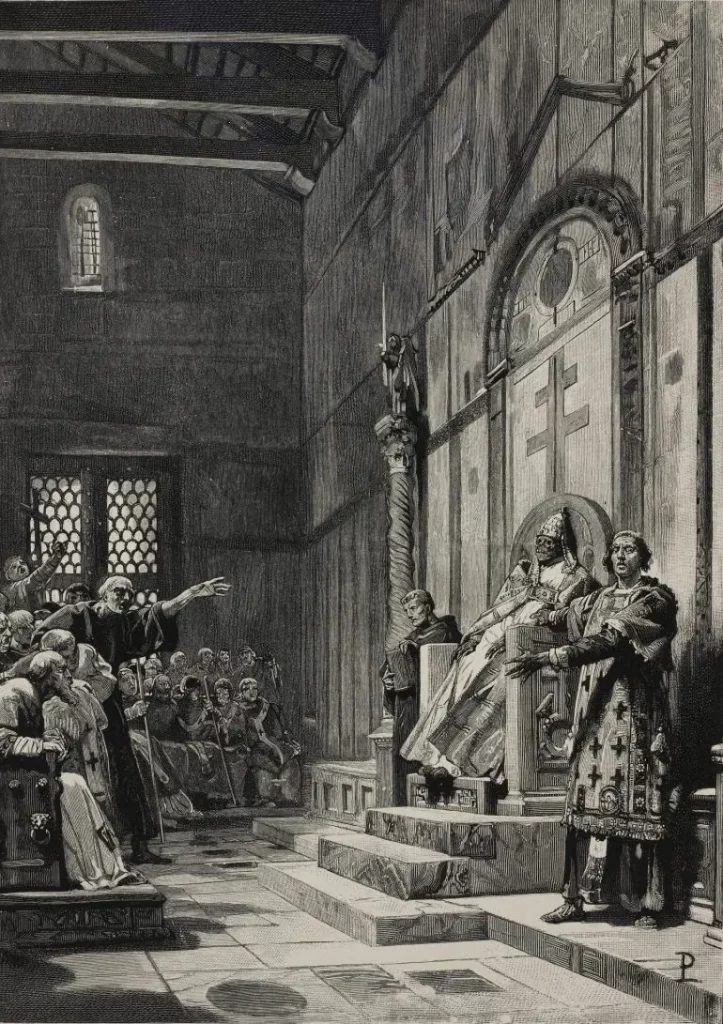
The Cadaver Synod, 897, engraving from the Middle Ages, 1892, by Francesco Bertolini, with illustrations by Lodovico Pogliaghi. Discovery.
Arguably the nadir of the papacy, the so-called “Cadaver Synod” of 897 saw Pope Stephen VI place the corpse of his predecessor on trial for spiritual misdeeds. In reality, Stephen VI held the trial as a favor to noble patrons with a political vendetta against the earlier pope. Jean-Paul Laurens’ painting captures the grim mood of a court aware of predestined notoriety.
Few institutions have lasted as long as the Catholic Church of Rome. At the head of this immense organization stands the pope of Rome, serving as God’s regent on Earth and spiritual guide to over a billion Christians. Unsurprisingly, Catholic worshippers expect the papacy to be a beacon of Christian morality. It’s also no surprise that the papacy has periodically fallen short of that expectation in its two millennia.
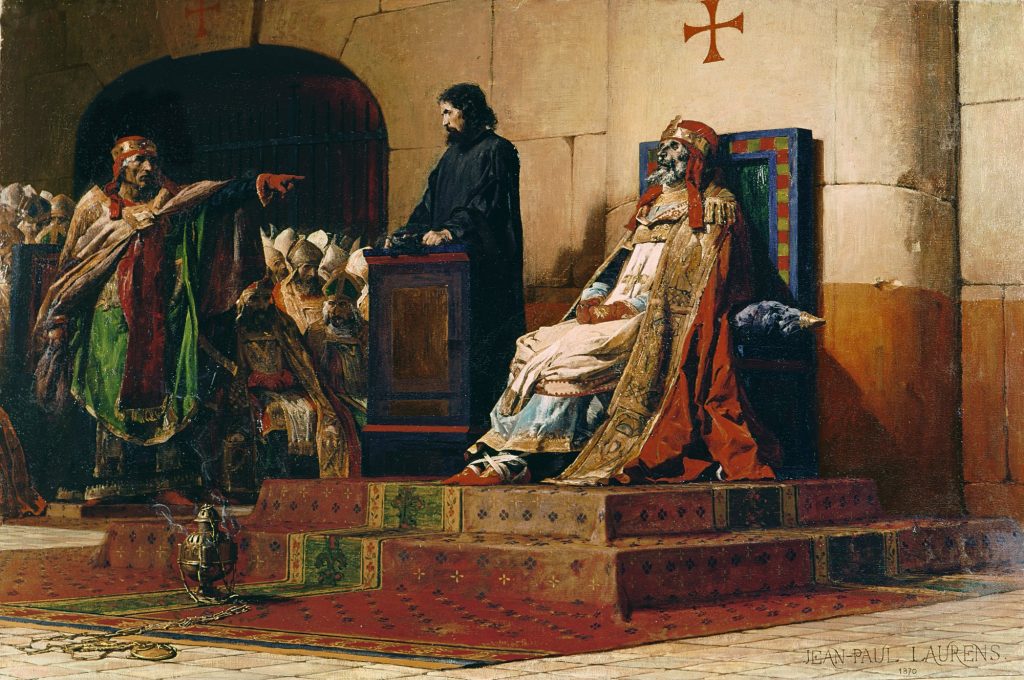
Jean-Paul Laurens, Pope Formosus and Stephen VI (The Cadaver Synod), 1870, Musée des Beaux-Arts, Nantes, France.
No era in papal history bears as much notoriety as the Saeculum obscurum. This dark age saw Christianity’s most powerful bishopric caught in a continuous saga of intrigue between dukes, kings, and emperors. The period from 882 and 985 CE saw nearly three dozen men claim the papacy–most toppled, dying suddenly, or murdered outright.
The root lay in the dynastic struggle that overtook the Frankish Empire. The empire reached its zenith under Charles I, better known as “Charles the Great” or Charlemagne. Charlemagne dominated Western Europe in the late eighth and early ninth centuries, establishing an authority unseen since Ancient Rome. Charlemagne proved a crucial stabilizer to a fractious Italy and a strong protector of the papacy. The pope counted on Charlemagne for security, meanwhile the emperor relied on the pope as a spiritual endorser of his rule.
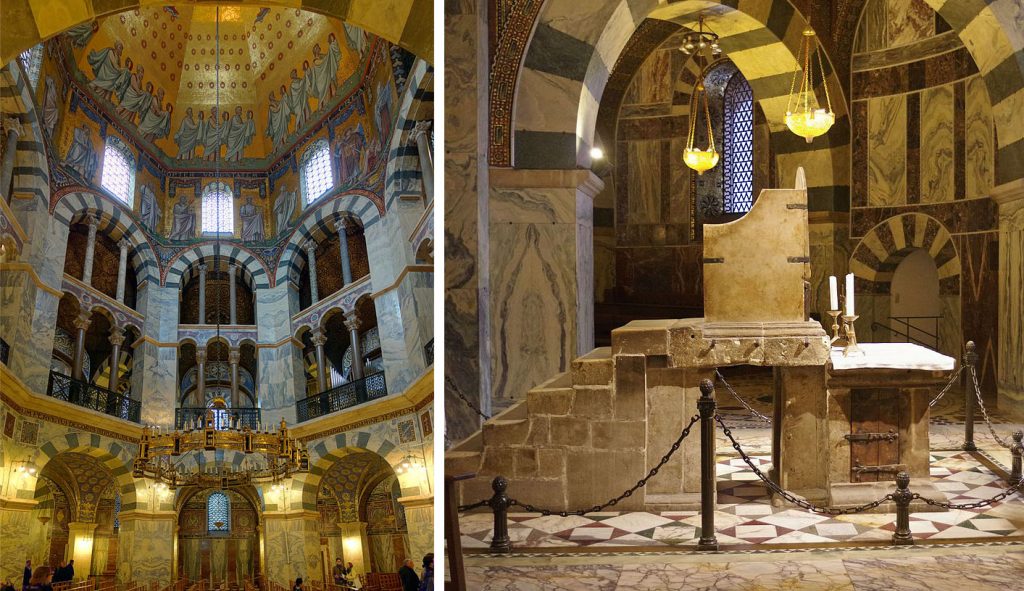
Left: Odo of Metz, Interior of Palatine Chapel, Aachen, consecrated in 805.
Right: Throne of Charlemagne, Aachen Cathedral, Germany. Photos by Velvet/Berthold Werner via Wikimedia Commons.
However, the Frankish Empire unraveled after Charlemagne’s death in 814. Descendants carved up the realm, fighting over titles and domains throughout the century. These successional wars spread into Italy where the peninsula’s noble houses took sides. At stake were the kingship of Italy and the prestigious title, papally bestowed on Charlemagne, of Imperator Romanorum – “Emperor of the Romans.”
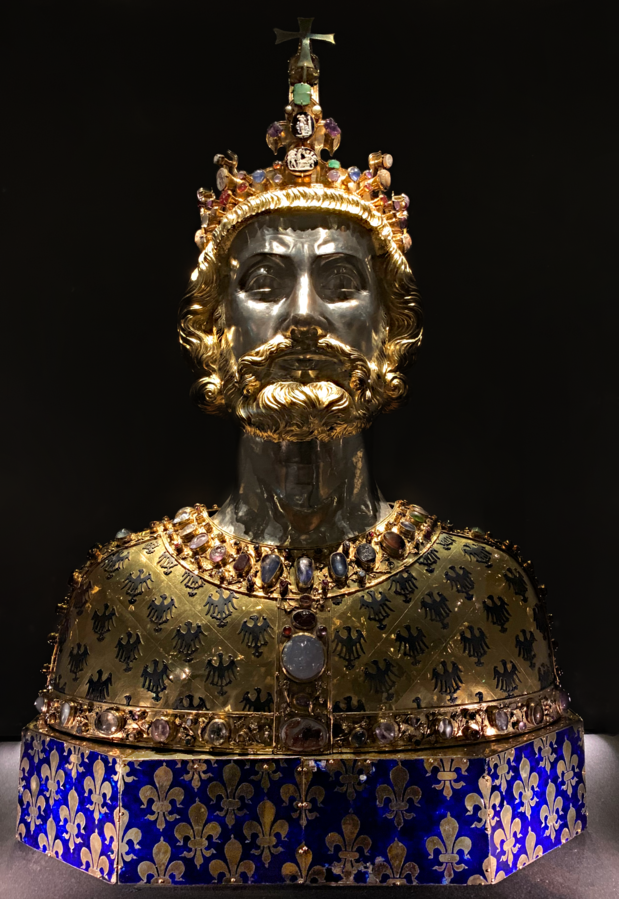
Bust of Charlemagne, 14th century, Aachen Cathedral Treasury, Germany. Photograph by Florian B. Gutsch via Wikimedia Commons.
With many contenders at play, papal support was seen as decisive in legitimizing any royal claim. So it was that competing factions vied to impose their will (and often their candidates) as bishop of Rome – no matter the cost. Italian factionalism spread from the nobility into the Roman clergy, many of whom hailed from Italy’s competing houses. The severity of this factionalism became evident in 882 when assassins inside the church battered Pope Ioannes VIII to death.1 Ioannes (John) had bestowed the title of emperor on Charles II of France in defiance of Charles’s brother, Ludwig of Germany. This decision fueled a deep split among the Roman clergy, so much so that Ioannes excommunicated one of the city’s powerful bishops, Formosus.
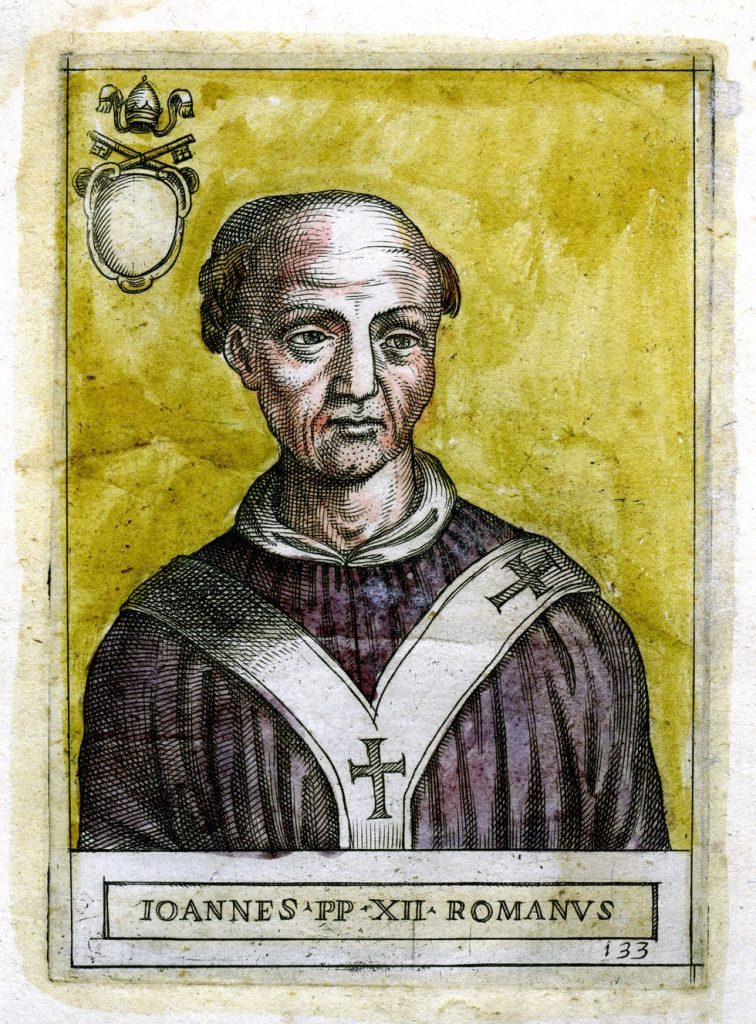
Giovanni Battista de’Cavalieri, Pope John XII from the Pontificum Romanorum Effigies 16th century. Wikimedia Commons.
Historians remained divided over what role, if any, Formosus played in the assassination of Ioannes VIII. After Ioannes’s murder, Formosus was reinstated to the clergy and secured the papacy in 891.2 It wasn’t long before Formosus was caught in another round of dynastic intrigue. Two cousins, Guido di Spoleto in Italy and Arnulf von Kärnten in Germany claimed the imperial title. Formosus sided with Arnulf, even endorsing the German duke’s military occupation of Italy. The partnership didn’t last long though; Arnulf soon returned to Germany after falling ill and Formosus died shortly after in 896.
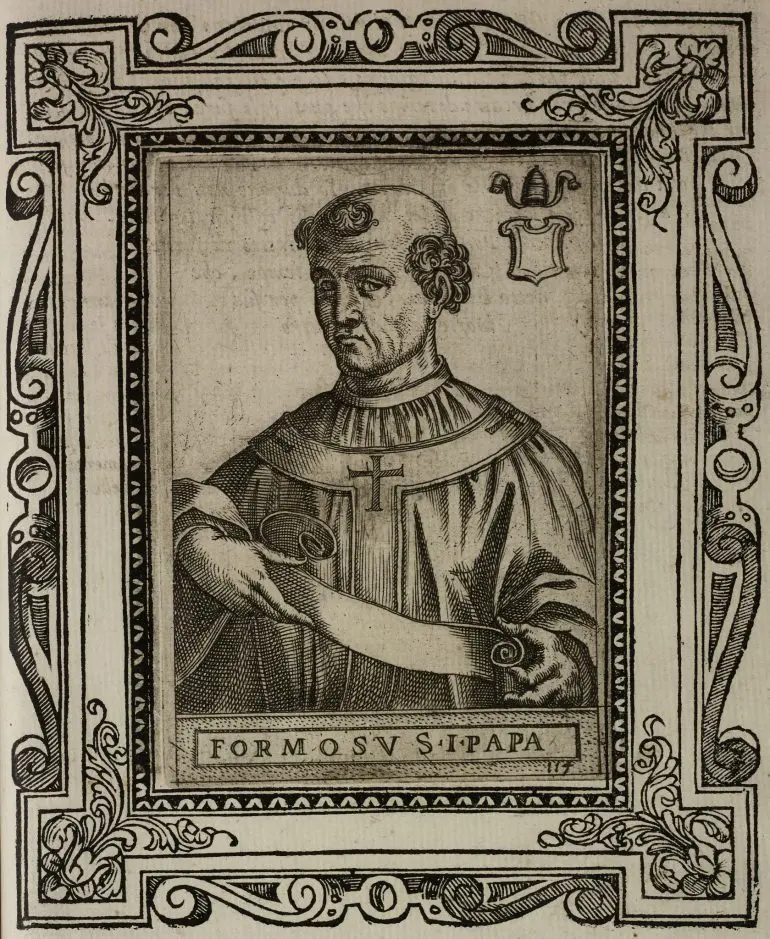
Giovanni Battista de’Cavalieri (Atributed), Pope Formosus, c. 1588. Discovery.
Not content with the man’s death, Guido’s family had their appointed pope, Stephanus VI (Stephen), place the dead Formosus on trial in 897. In perhaps the strangest episode in church history, Stephanus VI had Formosus’s body exhumed, re-dressed in papal regalia, and propped up in a courtroom to face a host of charges. The so-called “Cadaver Synod” ended with the late Formosus stripped, condemned, mutilated, and dumped into Rome’s Tiber River. However, Stephanus did not have long to enjoy the trial’s outcome, a church revolt ousted him from power and ended his life that same year.
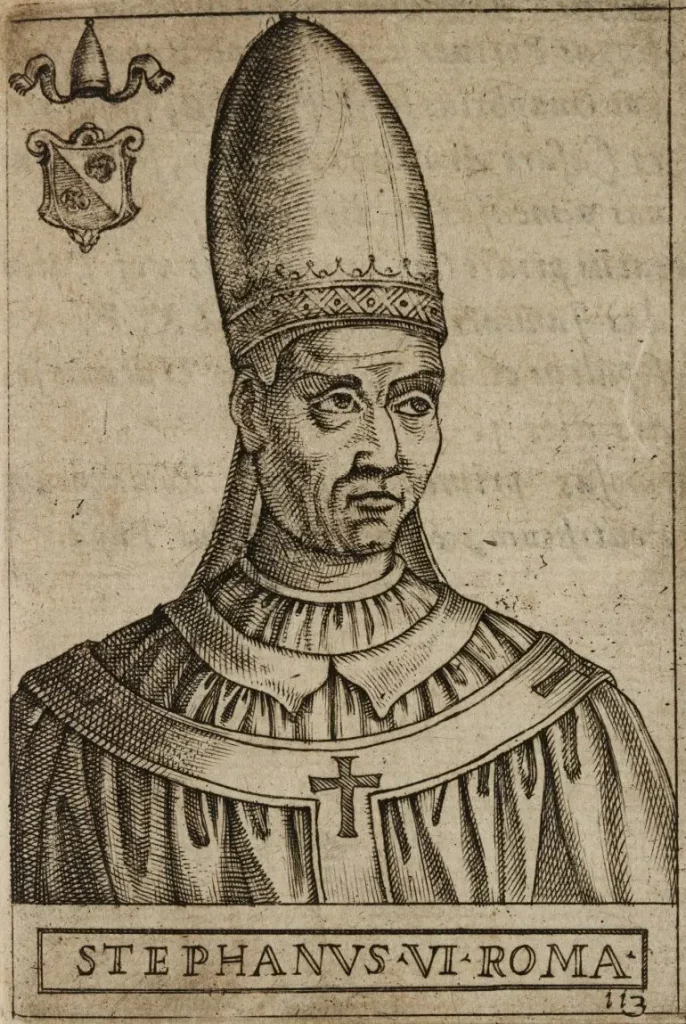
Antonio Ciccarelli, Portrait of Pope Stephen VI from The Lives of the Pontiffs, c. 1588. Discovery.
The tenth century saw the papacy dominated by one of Rome’s most powerful noble families. Teofilatto was the count of Tusculo, a getaway for Roman aristocrats since antiquity. The count secured access to the papacy through his daughter, Marozia, who counted Pope Sergius III as a lover. Sergius III, already infamous for the murder of two rivals, granted Teofilatto control of Rome’s military and treasury. Six of Teofilatto’s descendants eventually served as popes.3
It would take outside intervention to impose a semblance of order in Rome. In 962, King Otto I of Germany, also known as “Otto the Great,” invaded Italy at the behest of Pope Ioannes XII. Ioannes XII had been threatened by another powerful Roman family, the Crescenzi, and thus turned to the German king for protection. Otto I took Rome, received the imperial title, and – taking advantage of the pope’s vulnerability–secured a role in papal succession.
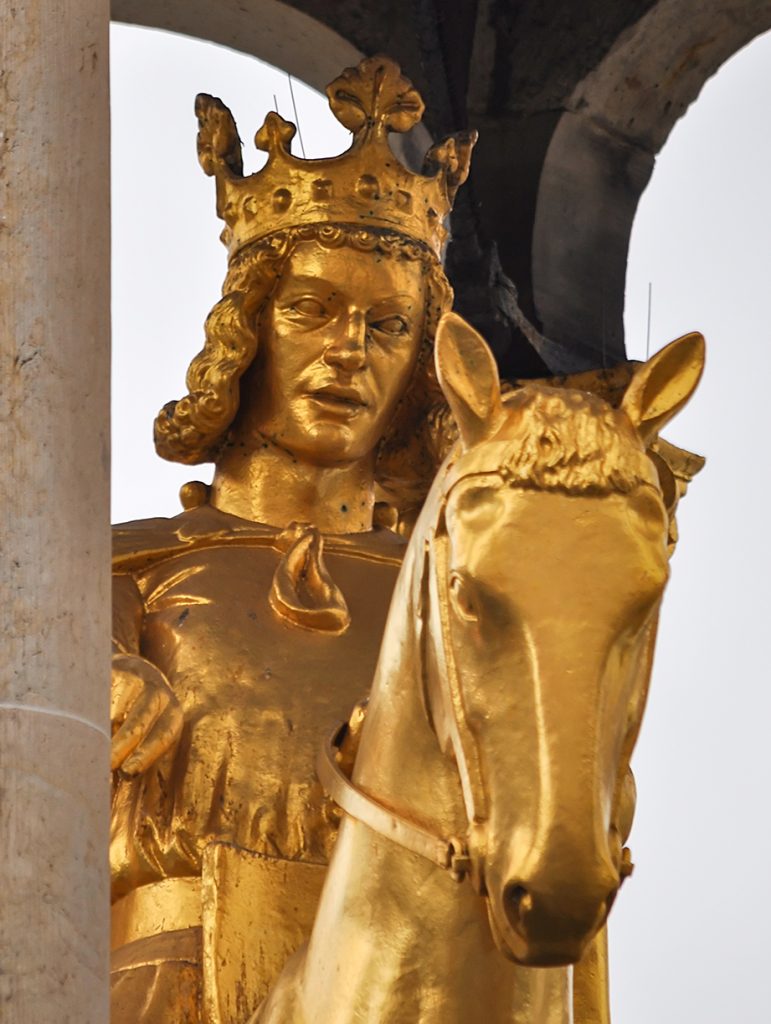
Magdeburg Rider statue detail, thought to be of Otto I, circa. 1245–1250, Magdeburg, Germany. Photograph by Ajepbah via Wikimedia Commons.
Together with his heirs, Otto I restored order in Rome in the late tenth century. While its violent factionalism subsided, the Roman papacy and Italian states would have to contend with German domination throughout the Medieval Period.
The papacy of Ioannes XII ranks among the Roman Church’s most licentious. A member of Roman nobility, Ioannes XII secured the papacy in his youth and garnered a reputation for carnal indulgence and violent ambition. He invited German intervention as a counterweight to Italian rivals.
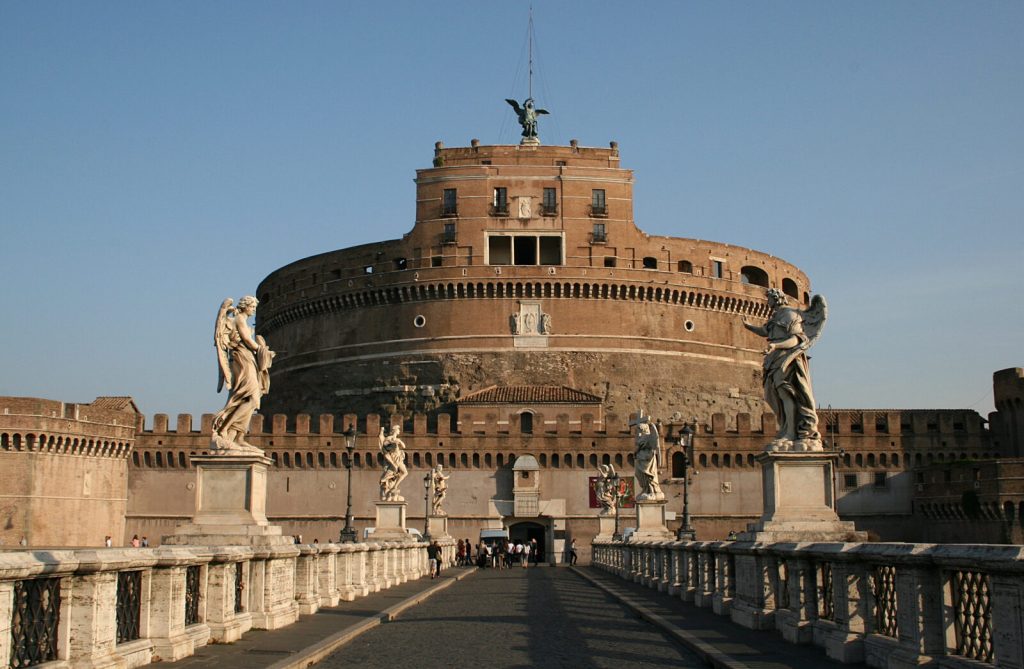
Castel Sant’Angelo (The Mausoleum of Hadrian), c. 134-139 CD, Rome, Italy, where Pope Benedict VI was imprisoned. orderisda.
With their hold on Rome challenged, the Crescenzi declared their own pope, Bishop Franco Ferrucci (Pope Benedict VI), in 974. Ferrucci’s disputed reign lasted 11 years, during which he evaded capture by German soldiers, found temporary refuge in Greece, and eliminated two rival popes until his own mysterious death in 985.4 That was also the year that Ioannes XV assumed the papacy in Rome. Ioannes XV had the support of both the imperial family and the Crescenzi. This led to speculation that Ferrucci’s death was not a coincidence.
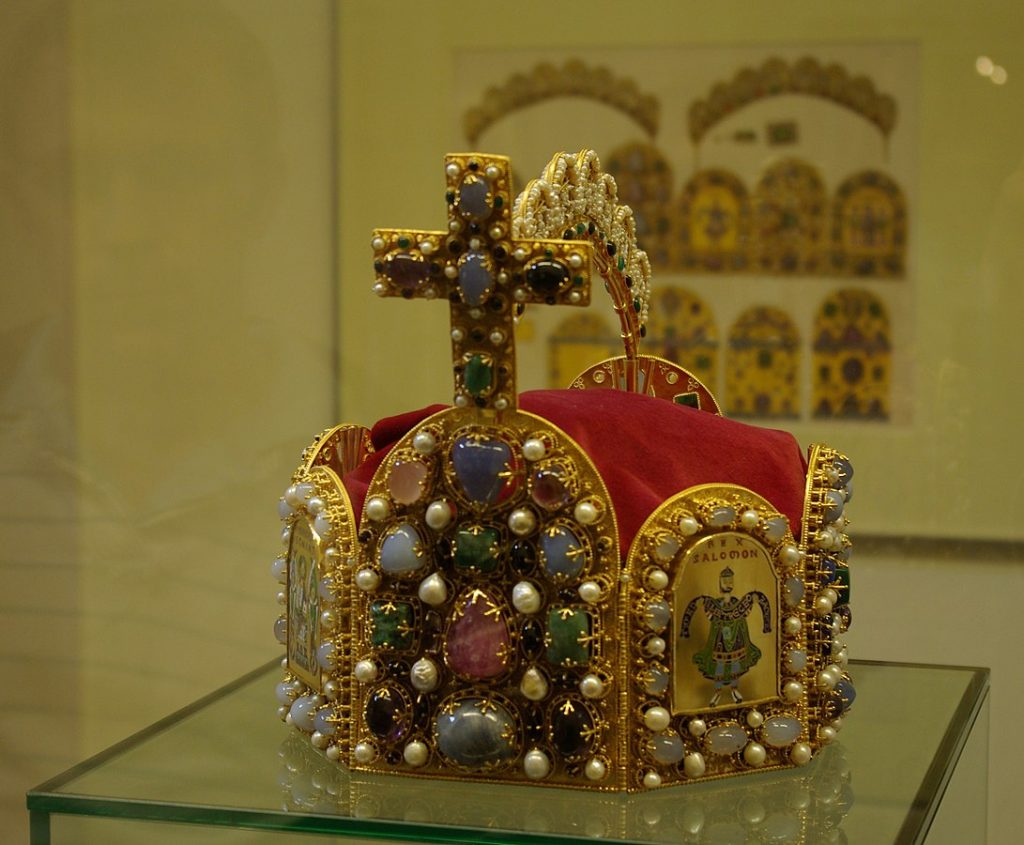
The Imperial Crown of the Holy Roman Empire, c. 962, Nuremberg City Hall, Germany. Photo via Wikimedia Commons.
Though Rome’s competing houses would continue to meddle in church politics, the papacy would never again fall into the kind of prolonged turmoil it faced between 882 and 985. Like the great Frankish kings in the eighth century, the German emperors became figures of stability through sheer force of arms. When the Crescenzi again seized the papacy by force in 996, Emperor Otto III of Germany captured Rome with little effort, restored the ousted pope, and executed the head of the Crescenzi family. To clarify his will, Otto III had the ousted Crescenzi pope mutilated and paraded on an ass.5 The order had finally returned to Rome but under the German imperial thumb–one that would affect Italy for centuries to come.
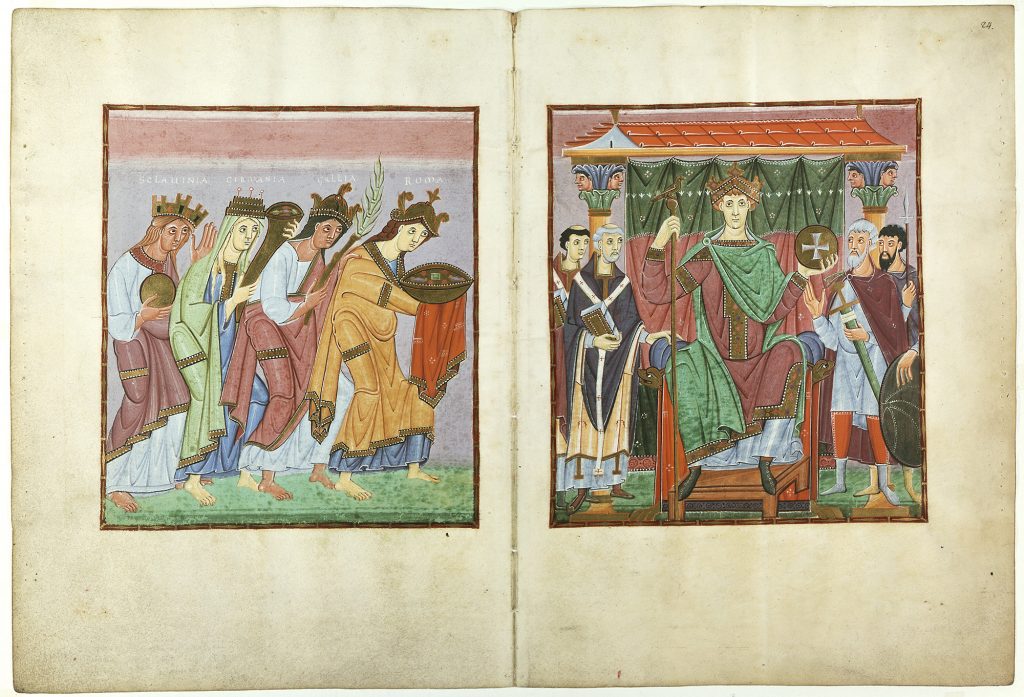
Gospels of Otto III, circa. 1000, left page: Provinces Bringing Tribute, right page: Ruler Portrait of Otto III, The Bavarian State Library, Munich, Germany. Photo via Smarthistory.
Author’s bio
Andrew Montiveo is a writer and producer in Los Angeles. A graduate of the University of California, Irvine, he has written for The Los Angeles Review of Books, The New Criterion, and The Worcester Journal.
John W. O’Malley, A History of the Popes, Government Institutes, 2009, p. 81.
F. Donald Logan, A History of the Church in the Middle Ages, Routledge, 2012, p. 98-9.
George L. Williams, Papal Genealogy, McFarland, 2004, p. 12.
Eric Russell Chamberlin, The Bad Popes, Barnes & Noble Publishing, 1986, p. 57.
Gerd Althoff, Otto III, Penn State Press, 2010, p. 79.
DailyArt Magazine needs your support. Every contribution, however big or small, is very valuable for our future. Thanks to it, we will be able to sustain and grow the Magazine. Thank you for your help!